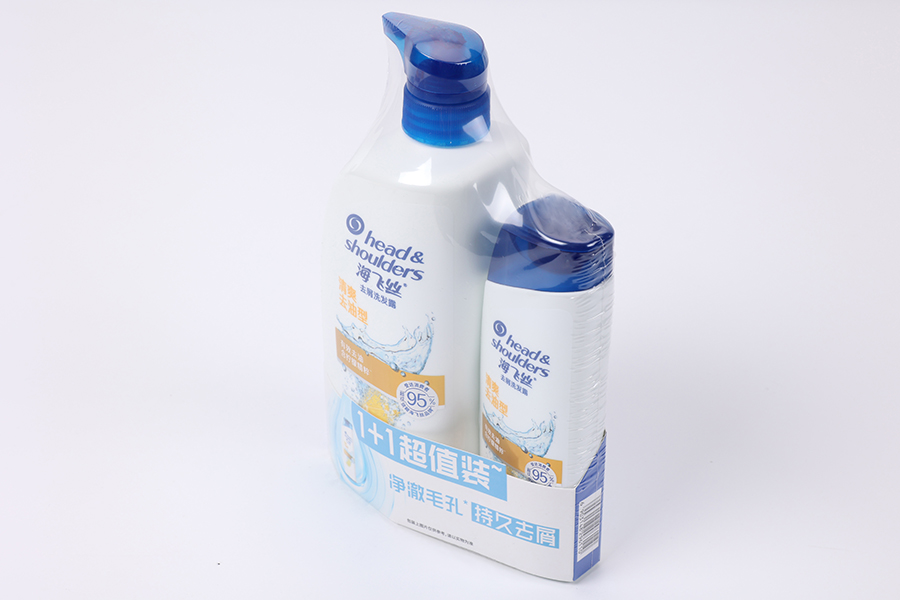The Invisible Shield: How EVOH High Barrier Shrink Film Protects Our Food
Dec 17,2025The Second Life of Plastic: Unpacking PCR Cross-Linked Shrink Film
Dec 08,2025The Invisible Shield: Unpacking the Power of POF Heat Shrink Film in Mobile Phone Packaging
Dec 03,2025POF Shrink Wrap: The Professional Standard in Protective and Aesthetic Packaging
Nov 24,2025Polyolefin Shrink Film Roll: Versatility and Performance in Modern Packaging
Nov 19,2025The Manufacturing Process of Cross-Linked Shrink Film
To fully understand the benefits of cross-linked shrink film, it's essential to explore how it's made. The production process involves a unique step known as cross-linking, where polymer chains are chemically bonded together to form a stronger and more resilient structure.
The cross-linking process typically involves:
Polymer Selection: Most cross-linked shrink films are made from polyethylene (PE), polyolefin (POF), or polyvinyl chloride (PVC) materials. The choice of polymer depends on the desired properties and application of the film.
Extrusion: The chosen polymer is heated and extruded into a thin film. This is the initial step in creating the base material that will eventually undergo cross-linking.
Electron Beam or Chemical Cross-Linking: In the next step, the extruded film is exposed to an electron beam or treated with chemical agents. These methods induce cross-linking by breaking existing molecular bonds and forming new ones between polymer chains. This results in a more robust film with enhanced physical properties.
Heat Shrinking: After the cross-linking process, the film is designed to shrink when exposed to heat. This property allows it to form a tight, protective layer around products, making it ideal for packaging applications.
Environmental Benefits of Cross-Linked Shrink Film
As sustainability becomes a top priority for businesses and consumers alike, cross-linked shrink film offers several eco-friendly advantages that set it apart from traditional packaging materials:
Material Efficiency: Cross-linked shrink film requires fewer raw materials to achieve the same level of protection as thicker, non-cross-linked films. This reduces resource consumption and minimizes the overall environmental footprint of the packaging.

Recyclability: Many cross-linked shrink films are fully recyclable, contributing to the reduction of plastic waste. Manufacturers are also developing biodegradable versions of shrink films, further enhancing their sustainability profile.
Reduced Carbon Emissions: The lightweight nature of cross-linked shrink film means that it takes up less space during transportation, resulting in lower fuel consumption and reduced carbon emissions. This makes it a more environmentally responsible choice for shipping and logistics.
Waste Reduction: The durability and puncture resistance of cross-linked shrink film result in fewer damaged products during transit. This helps reduce product waste, saving both materials and energy in the manufacturing process.
Industries Benefiting from Cross-Linked Shrink Film
Various industries have adopted cross-linked shrink film for its superior performance and environmental benefits. Some of the key sectors include:
Food and Beverage: Cross-linked shrink film is widely used in the food industry to package items such as frozen foods, fresh produce, and baked goods. Its ability to create an airtight seal preserves product freshness and reduces food waste.
Pharmaceuticals: In the pharmaceutical sector, cross-linked shrink film is used to package medical devices, medications, and supplements. Its tamper-evident properties provide an added layer of security, ensuring that products remain uncontaminated during shipping and handling.
Consumer Goods: Manufacturers of consumer electronics, toys, and household goods use cross-linked shrink film to protect products from damage while enhancing their visual appeal. The film’s clarity and gloss make it an ideal choice for retail packaging.
Future Trends and Innovations in Cross-Linked Shrink Film
As technology and consumer demands evolve, cross-linked shrink film continues to undergo innovations to improve its functionality and sustainability. Some future trends include:
Biodegradable Shrink Films: Researchers are developing biodegradable versions of cross-linked shrink film to further reduce its environmental impact. These films break down naturally over time, offering a greener alternative to traditional plastics.
Thinner and Stronger Films: Advances in material science are enabling manufacturers to produce even thinner cross-linked shrink films without sacrificing strength or durability. This not only reduces material usage but also lowers packaging costs.
Smart Packaging Solutions: The integration of smart technologies, such as QR codes and RFID tags
The Role of PCR Polyolefin Shrink Film in Sustainable Packaging
The Versatility and Benefits of Cross-Linked Shrink Film in Packaging
Mobile site

alibaba
Copyright © 2023 Zhejiang Zhongcheng Packing Material Co., Ltd. All Rights Reserved. Privacy Polyolefin Shrink Film Manufacturers


